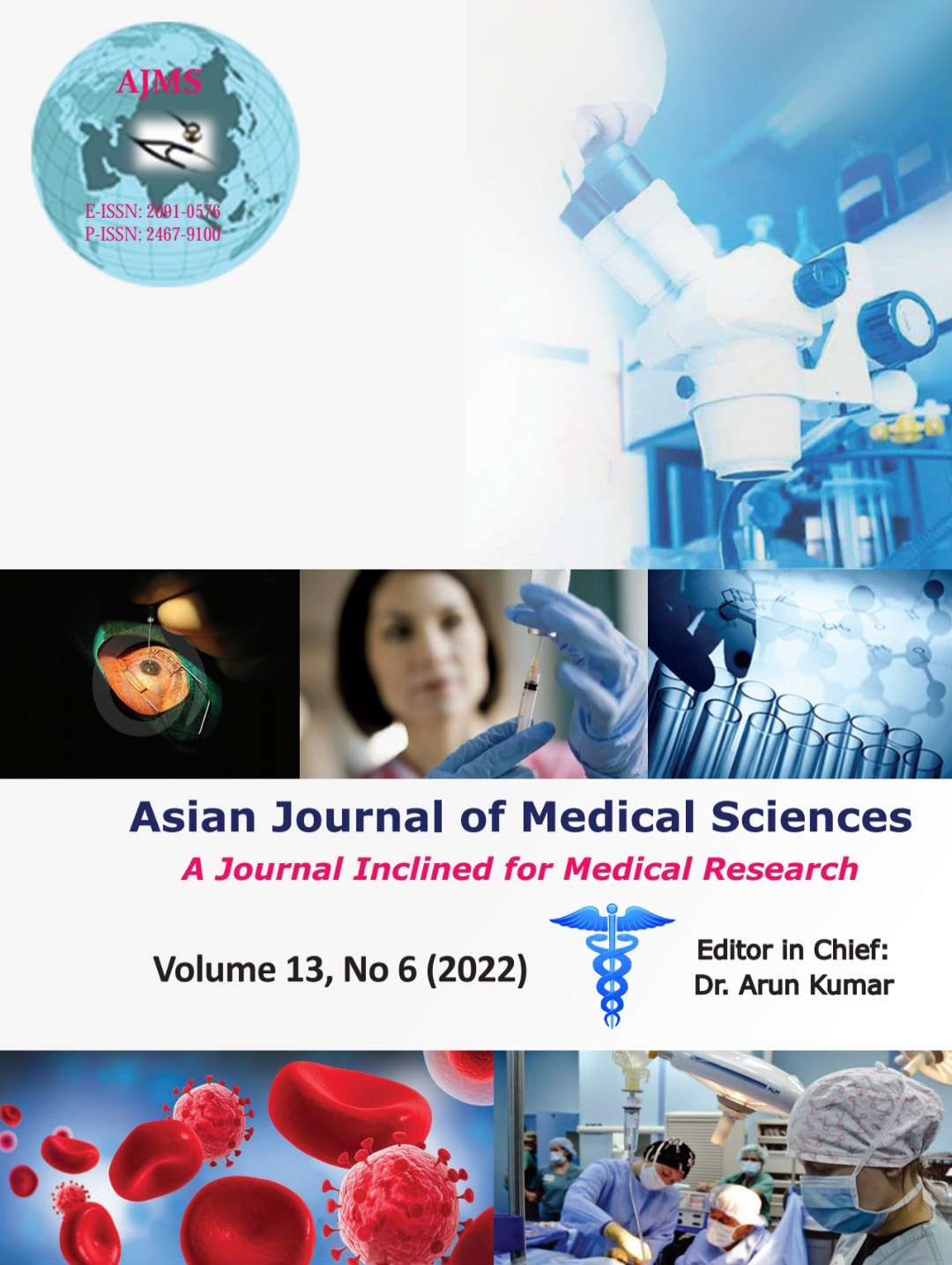Seroprevalence of antiSARS-CoV-2 IgG antibodies in children with household exposure to confirm cases of COVID-19 during the second wave of COVID-19 pandemic in Kota, Rajasthan
Keywords:
Anti-SARS-CoV-2 antibodies, Children, COVID-19, SARS-CoV-2; SeroprevalenceAbstract
Background: Weather and the susceptibility of children to SARS-CoV-2 infection is still a debated question particularly in view of important decisions regarding opening schools. Therefore, we planned this cross-sectional analysis of antiSARS-CoV-2 Immunoglobulin-G (IgG) antibodies in children with known household exposure to SARS-CoV-2. This serosurveillance, to find the presence of IgG antibodies among children of probable household exposure of confirmed COVID-19 cases will help in the better understanding of the immune response after COVID-19 infection/exposure.
Aims and Objectives: The aim of the study was to investigate the prevalence of anti-SARS-CoV-2 antibodies in children among the families who had confirm case/cases of COVID 19 during the second wave of the COVID-19 pandemic. This study is designed as a cross-sectional serosurveillance study in Kota, Rajasthan India.
Materials and Methods: Population-based serosurveillance among children with probable household exposure to confirmed COVID-19 cases who was admitted in Govt. Medical College attached COVID 19 dedicated hospital was carried out during October 2021 to December 2021 using the COVID IgG Antibody Detection Enzyme-Linked Immunosorbent Assay kits. Seropositivity among children was measured and with various other factors to understand the immunity status among COVID-19 cases. Descriptive statistical analysis done.
Results: 156/1285 eligible candidates (19.53%) having a total of 251 household contacts of <17 years age group agreed to participate in study while rest of them refused. Anti-SARS-CoV-2 IgG antibodies were present in 127/251 household contacts (50.59%). Among them maximum 28.68% of seropositive were from age group 11–17 years age, symptoms were observed in 29.13% IgG positive contacts, maximum seropositivity was seen when only one family member was hospitalized, 63% seropositivity was seen when primary relative of child was hospitalized as compared to secondary. Maximum seroreactivity (55.9%) was seen when the Chest CT score of index case was high, that is, 14–25. max reactivity was observed 76/127 (59.84%) when hospital duration of index case is <1 week. 118/127 (92.91%) of seroreactive children were found when the index case was unvaccinated or partially vaccinated.
Conclusion: Seropositivity of 50.59% suggests that all the cases may not have IgG antibodies. Among the seronegative cases, the antibodies either not developed, or are undetectable, or have disappeared during the post COVID period. Seropositivity based on gender difference is statistically not significant. Proportion of positivity shows an increasing trend with increasing age among pediatric household contacts. Complete COVID-19 vaccination is an effective tool to minimize the disease frequency/severity. Severe disease patients with high CT score transmits the infection to household contacts more efficiently.
Downloads
Downloads
Published
How to Cite
Issue
Section
License
Copyright (c) 2022 Asian Journal of Medical Sciences

This work is licensed under a Creative Commons Attribution-NonCommercial 4.0 International License.
Authors who publish with this journal agree to the following terms:
- The journal holds copyright and publishes the work under a Creative Commons CC-BY-NC license that permits use, distribution and reprduction in any medium, provided the original work is properly cited and is not used for commercial purposes. The journal should be recognised as the original publisher of this work.
- Authors are able to enter into separate, additional contractual arrangements for the non-exclusive distribution of the journal's published version of the work (e.g., post it to an institutional repository or publish it in a book), with an acknowledgement of its initial publication in this journal.
- Authors are permitted and encouraged to post their work online (e.g., in institutional repositories or on their website) prior to and during the submission process, as it can lead to productive exchanges, as well as earlier and greater citation of published work (See The Effect of Open Access).




